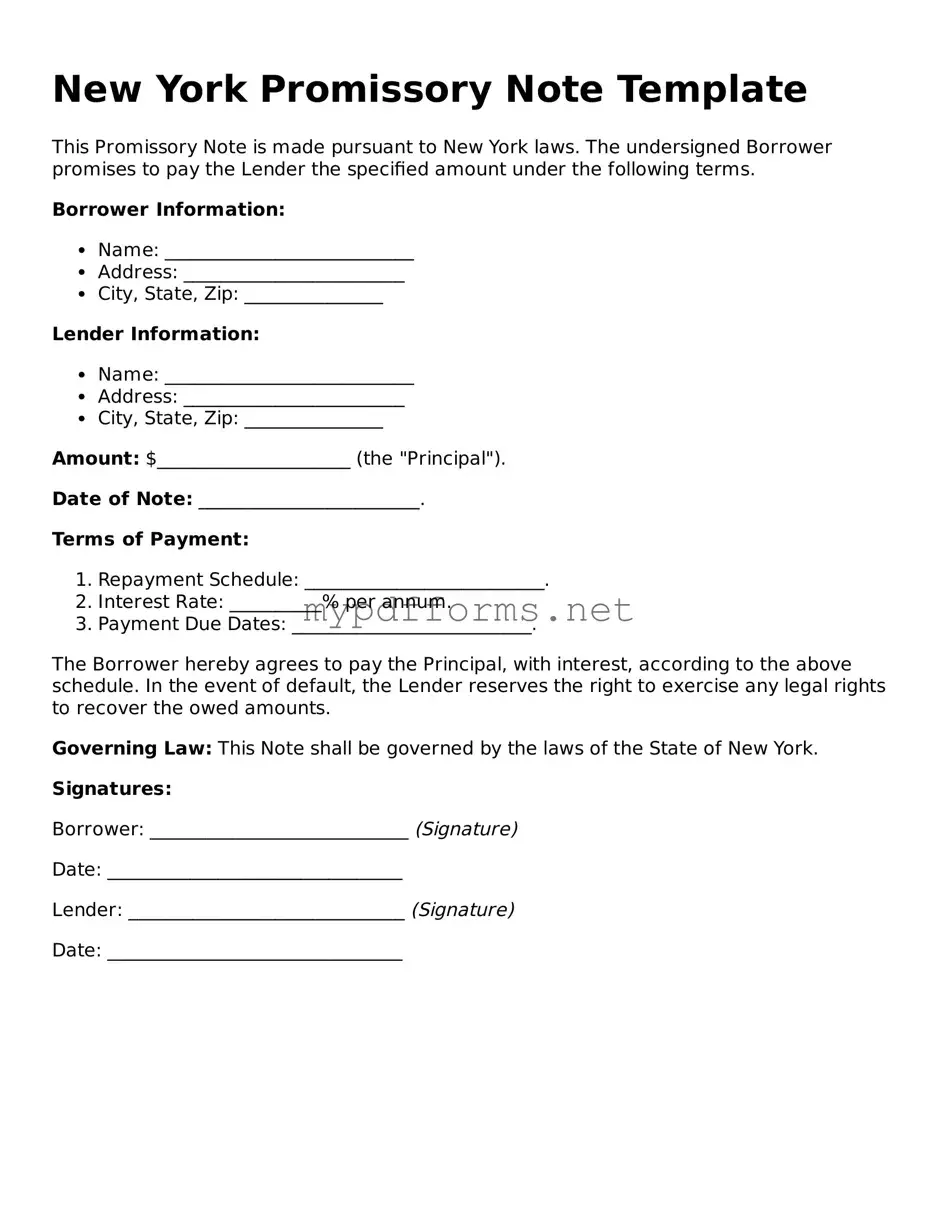A promissory note is a financial document that outlines a borrower's promise to repay a loan. It is similar to a loan agreement, which also details the terms of borrowing. A loan agreement typically includes the loan amount, interest rate, repayment schedule, and any collateral involved. Unlike a promissory note, which is a simple promise to pay, a loan agreement can be more complex, covering additional legal obligations and rights of both parties. Both documents serve to protect the lender's interests while providing clarity to the borrower regarding their repayment responsibilities.
A mortgage is another document that shares similarities with a promissory note. In a mortgage, the borrower secures a loan for real estate, and the property itself serves as collateral. The promissory note is often part of the mortgage package, where it specifies the borrower's promise to repay the loan. While the mortgage outlines the rights of the lender to foreclose on the property if payments are not made, the promissory note focuses solely on the repayment promise. Both documents work together to establish the terms of the loan and the consequences of default.
A personal guarantee can also be compared to a promissory note. In this case, an individual agrees to be responsible for a loan taken out by a business. This guarantee provides the lender with additional security. Like a promissory note, a personal guarantee is a commitment to pay back the borrowed amount. However, it extends beyond the business's assets, holding the individual personally accountable. Both documents help lenders assess risk and ensure repayment, but a personal guarantee adds a layer of personal responsibility.
A loan application is another document that shares some characteristics with a promissory note. While a promissory note is a commitment to repay, a loan application is the initial request for funds. The application collects information about the borrower’s financial situation, including income, credit history, and existing debts. This information helps lenders decide whether to issue a loan. Although the two documents serve different purposes, they are interconnected in the lending process, with the application leading to the creation of a promissory note if the loan is approved.
An installment agreement is similar to a promissory note in that it outlines a payment plan for repaying a debt. This document specifies the total amount owed, the number of payments, and the due dates. While a promissory note is a straightforward promise to pay, an installment agreement breaks down the repayment into smaller, manageable amounts. Both documents aim to facilitate repayment but do so in different formats. An installment agreement may offer more detailed terms regarding payment schedules than a standard promissory note.
A forbearance agreement can also be compared to a promissory note. In a forbearance agreement, a lender allows a borrower to temporarily pause or reduce payments due to financial hardship. This document outlines the new terms of repayment during the forbearance period. While a promissory note establishes the original repayment terms, a forbearance agreement modifies those terms to accommodate the borrower’s situation. Both documents are essential in managing debt and ensuring that borrowers can continue to meet their obligations under changing circumstances.
In the realm of motorcycle transactions, the importance of using a Minnesota Motorcycle Bill of Sale cannot be overstated, as it serves as a formal record that facilitates a seamless transfer of ownership. For those looking to understand this essential document further, comprehensive resources can be found at https://motorcyclebillofsale.com/free-minnesota-motorcycle-bill-of-sale/, ensuring clarity on the vital elements involved in the sale.
Lastly, a deed of trust is another document that bears similarities to a promissory note. A deed of trust is used in real estate transactions to secure a loan, with a third party holding the title until the loan is repaid. The promissory note, in this case, serves as the borrower's promise to repay the loan. While the deed of trust provides the lender with security over the property, the promissory note focuses on the borrower's commitment. Both documents work together to facilitate the lending process and protect the lender’s interests.
